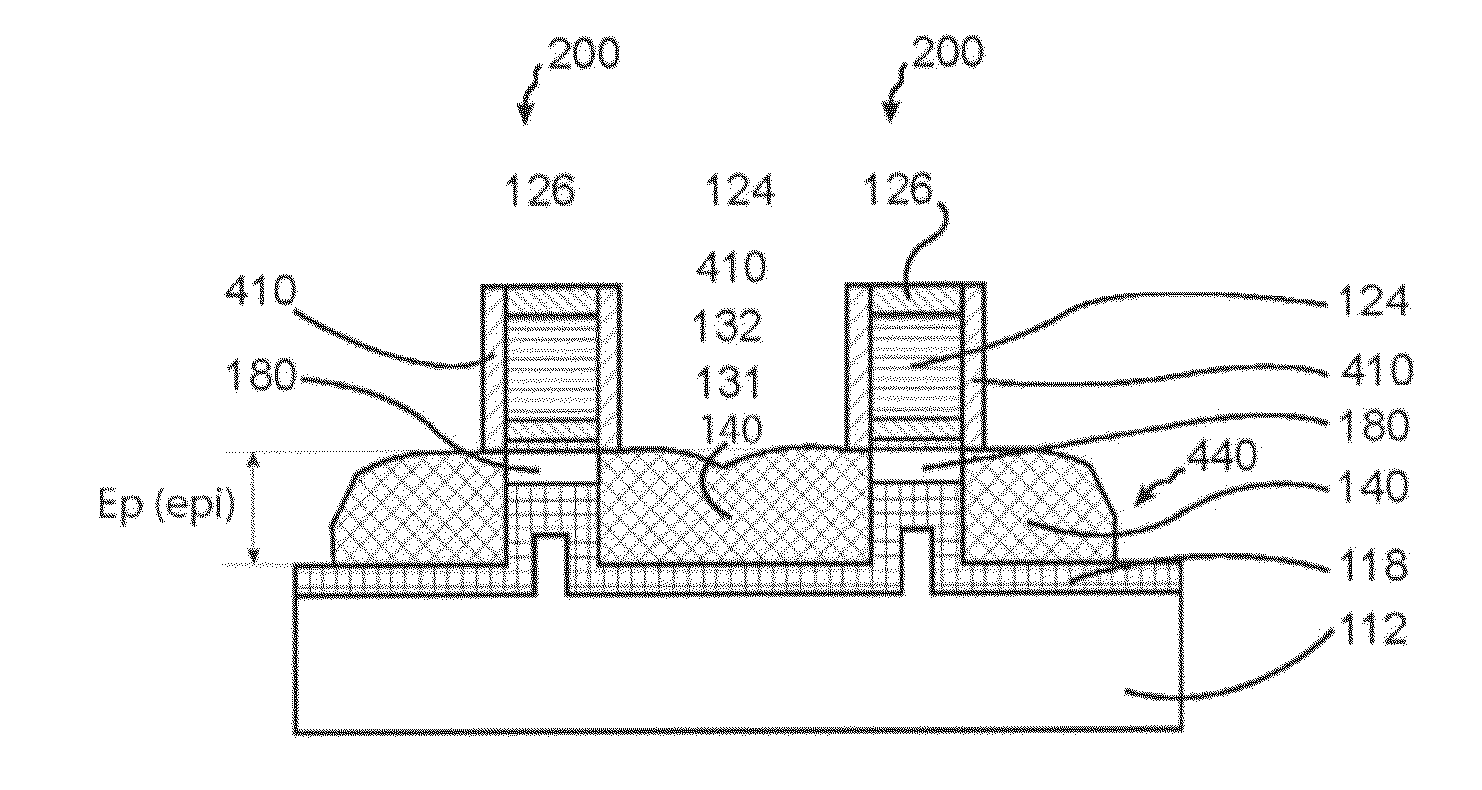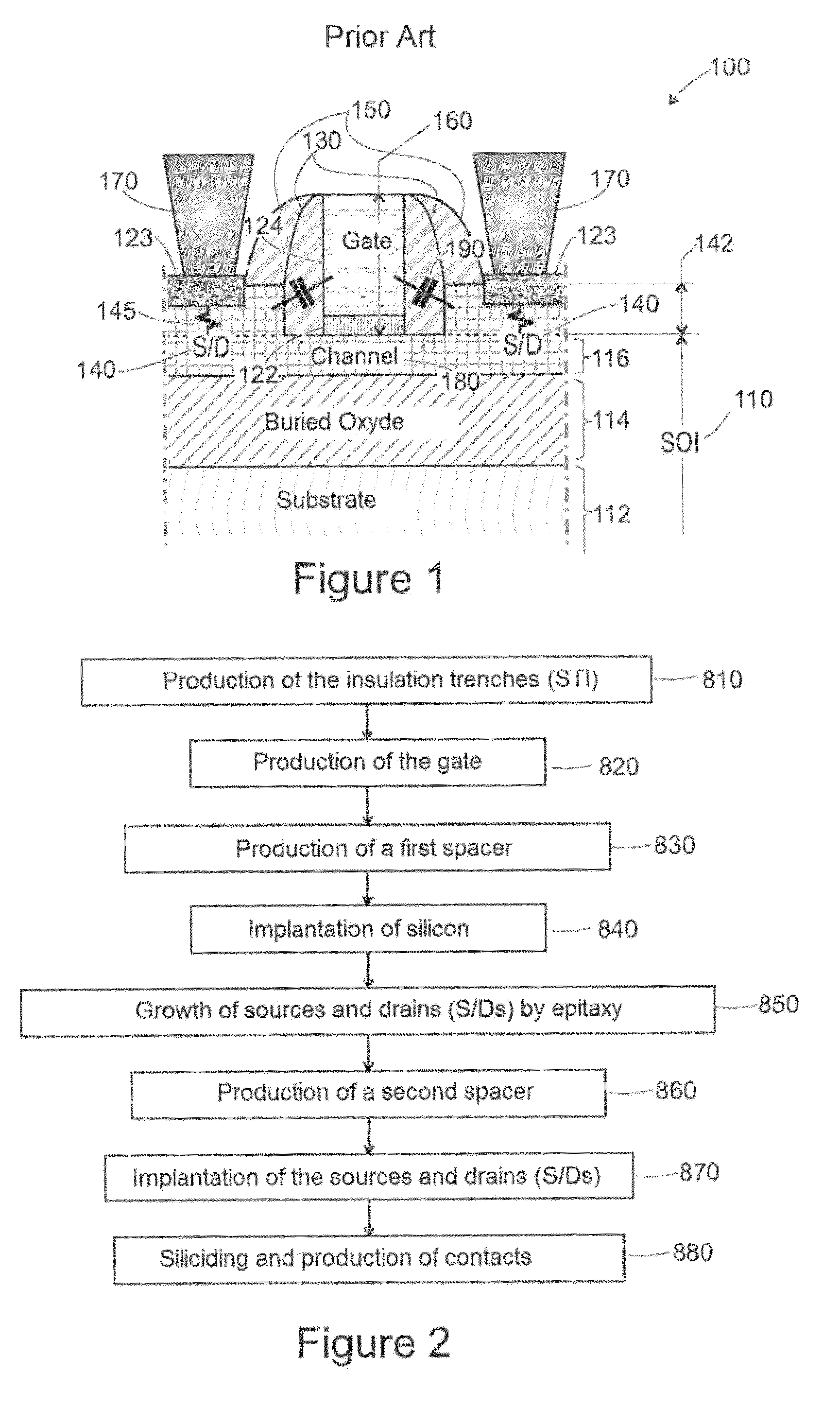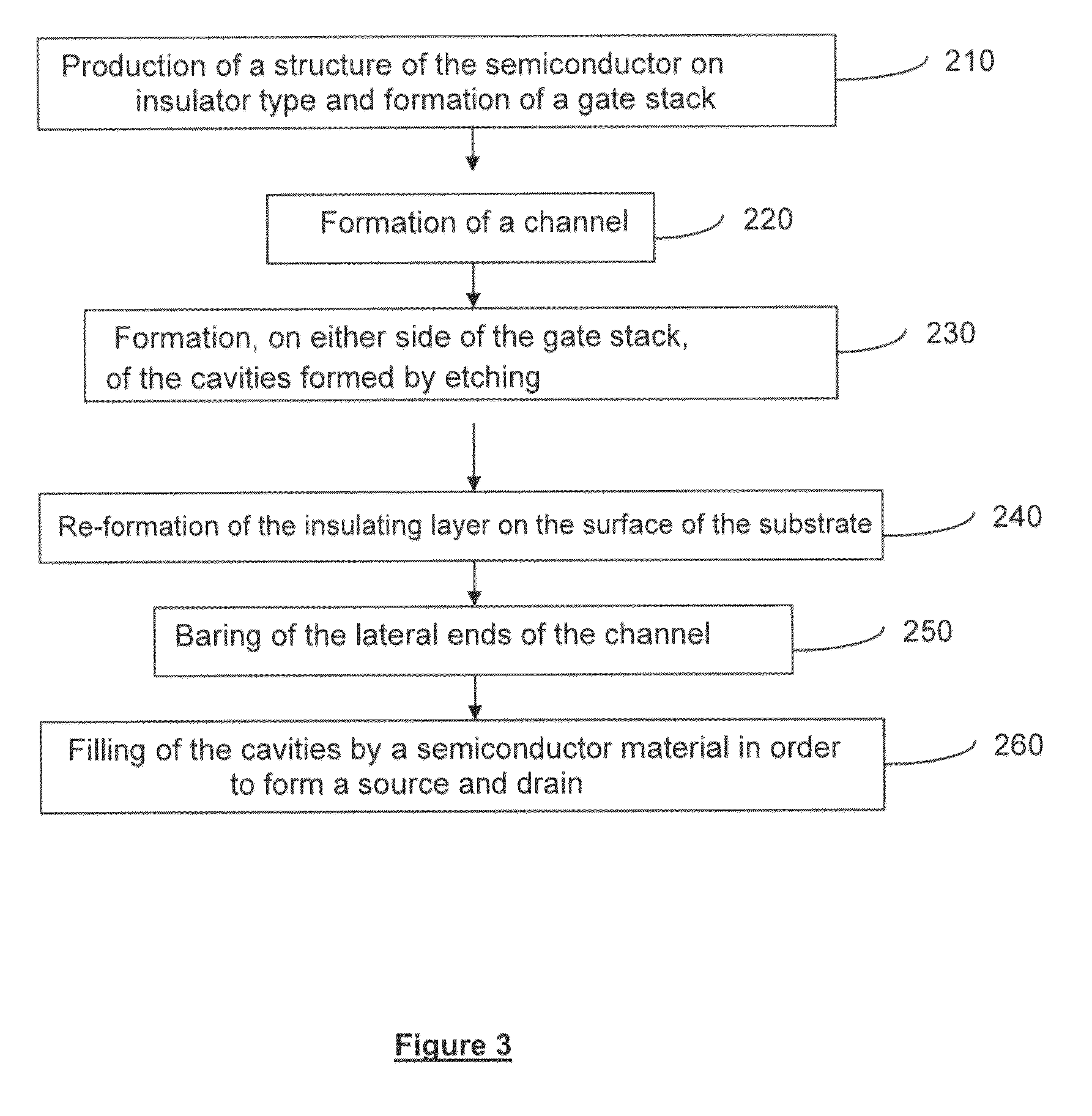Method of making a transistor
a transistor and transistor technology, applied in the field of transistors, can solve the problems of difficult to precisely control the depth of implantation, and achieve the effects of eliminating alignment defects, simple, reliable and easy to reprodu
- Summary
- Abstract
- Description
- Claims
- Application Information
AI Technical Summary
Benefits of technology
Problems solved by technology
Method used
Image
Examples
first embodiment
[0120]FIGS. 4a to 4e describe steps of a first embodiment according to the method of the invention.
[0121]FIG. 4a illustrates a structure 200 of the SOI type, the active layer 146 of which is surmounted by two gates 124. Only two gates 124 are illustrated in this figure in order to facilitate understanding of the invention. This figure is obtained at the end of step 210 in FIG. 3. This step 210 consists of producing, from a substrate 112, often referred to as a bulk substrate, an initial insulating layer 114 and an active layer 146 intended subsequently to form the channel 180 of each transistor 200. Next, during this step 210, a stack 160 comprising following layers stacked from the active layer 146 is produced: an insulation layer of the gate, often referred to as a thin gate oxide 131 or high-k layer, a metal layer 132, a gate 124 and a hard mask 126 covering the top surface of the gate 124. Furthermore, the substrate 112 is preferentially a doped substrate where the doping level ...
third embodiment
[0135]The oxidation of the surface of the substrate 112 to form the insulating film also leads, in this non-limitative embodiment, to oxidising the portions of the channel 180 that are not protected. This is because the channel 180 is not protected by the spacers 410 or by protective layers, as is the case for example with the third embodiment described below. Advantageously, the oxidation is performed so that the width of the layer of oxide formed on the ends of the channel 180 is at most equal to the width of the spacers 410. For example, the spacers have a width of 10 nm. In addition, the oxidation is performed so that the thickness of the oxidised layer formed on the surface of the substrate 112 is at least twice as great as the width of the layer of oxide formed on the ends of the channel 180. For the gate length of the technological node in question, such as a length of 14 nm or 20 nm, the formation of an oxide as thin as 1 nm at the channel is achievable.
[0136]In the context ...
second embodiment
[0192]FIGS. 7d and 7e show respectively the gate structures at the end of steps 230 and 240. The descriptions concerning these steps are respectively identical to those concerning the performance of steps 230 and 240 of the second embodiment presented respectively in FIGS. 5d and 5e. At the end of these steps, an insulating film is produced on the uncovered surfaces of the substrate 112 in order to re-form, with the remaining portions of the initial insulating layer 114, an uninterrupted insulating layer 118 on the surface of the substrate 112.
[0193]FIG. 7f shows the structure obtained at the end of step 230. In order to have a thicker source and drain 140, a partial step of etching the re-formed insulating layer 118 is performed. This etching is isotropic. The etched thickness is of a dimension at least equal to that of the sacrificial spacers 412.
[0194]Thus the layer of oxide situated in line with the sacrificial spacers 412 is taken off. The etching is performed for example with ...
PUM
 Login to View More
Login to View More Abstract
Description
Claims
Application Information
 Login to View More
Login to View More - R&D
- Intellectual Property
- Life Sciences
- Materials
- Tech Scout
- Unparalleled Data Quality
- Higher Quality Content
- 60% Fewer Hallucinations
Browse by: Latest US Patents, China's latest patents, Technical Efficacy Thesaurus, Application Domain, Technology Topic, Popular Technical Reports.
© 2025 PatSnap. All rights reserved.Legal|Privacy policy|Modern Slavery Act Transparency Statement|Sitemap|About US| Contact US: help@patsnap.com



